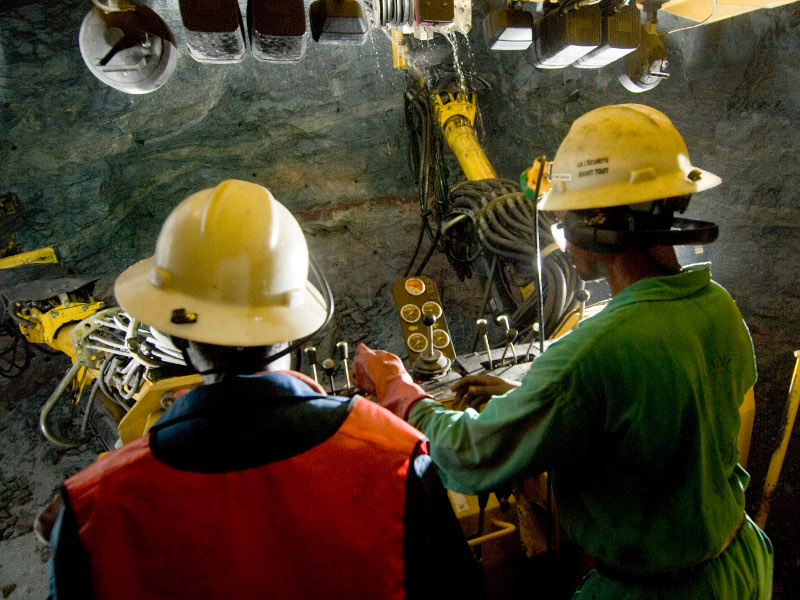Katanga Mining Limited (KML) is developing the Kamoto mine as part of its extensive copper-cobalt project in Lualaba Province of the Democratic Republic of Congo (DRC). Glencore International (GIAG), a subsidiary of Glencore, holds 86.3% stake in KML.
KML formed two joint ventures namely Kamoto Copper Company (KCC) and DRC Copper and Cobalt Project (DCP), for developing the large-scale copper-cobalt project. KML holds 75% stake in KCC and DCP, while the state-owned mining company Gécamines holds the remaining 25%.
The Kamoto underground mine, which commenced operations in 1969, is the primary sulphide ore supplier for KML.
Kamoto mine location, geology, and mineralisation
The mineralised zones of KCC are located at the western end of the Katangan Copperbelt, which houses some of the world’s richest copper, cobalt, and uranium deposits.
Project Gallery
-

Ongoing operations at the Kamoto copper-cobalt mine, located in Lualaba province of the DRC (Credit: Katanga Mining)
-

The Kamoto underground mine is the primary provider of sulphide ore to KML. Image courtesy of Katanga Mining Limited (KML).
-

The Luilu metallurgical plant employs electro-winning circuits to produce copper cathode metal and cobalt hydroxide cake. Image courtesy of Katanga Mining Limited (KML).
The ore body of the Kamoto underground mine is divided into five fragments, namely Principal, Etang South, Etang North, Ecaille Renversee, and Pringle.
The Principal fragment is a rough L-shape syncline, which comprises flat-lying to gently-dipping rocks in the central and northern areas. The Etang South fragment is classified as a broad open synform comprising sedimentary layers in a concave formation, while Etang North is identified to be a rectangular slab dipping 35° to 55° to the east.
Ecaille Renversee is identified between Principal and Etang North fragments, while Pringle hosts a moderately open synform.
Kamoto underground mine reserves
The proven and probable reserves at Kamoto mine, as of December 2018, were estimated to be 26.6Mt, grading 3.40% copper and 0.54% cobalt. The project is estimated to contain measured and indicated mineral resources of 77.7Mt, grading 3.92%TCu and 0.48%TCo.
Mining at Kamoto mine
Room and pillar, transversal longhole retreat with back-fill, and longitudinal longhole retreat with back-fill are currently applied at the Kamoto underground mine.
Room and pillar method is employed at the OBS and OBI horizons, while the access drives are constructed along strike on the hanging wall contact. Hydraulic or cement hydraulic backfilling will take place once the pillars are mined.
Transverse longhole retreat with back-fill method is proposed for Zones 1, 6, 7, and Etang South, while the Etang North ore body is mined using longitudinal longhole retreat method with back-fill.
Ore processing
Ore mined at the underground mine is processed at the Kamoto Concentrator (KTC) and the Luilu Metallurgical plant.
The sulphide ore from KTO is currently treated in a separate sulphide mill and float circuit of the new KTC circuit, with a capacity of 12 million tonnes per annum (Mtpa). The resultant concentrate, along with the concentrate produced from the mixed KOV OP and Mashambe East OP ore, is pumped to the roasters at Luilu for further processing.
At the Luilu plant, the concentrate passes through three roasters, a leaching circuit, and electro-winning cells to produce final copper and cobalt products.
The whole ore leach (WOL) plant at Luilu features optimised copper and cobalt circuits. It is capable of producing 300,000tpa of copper cathode metal and 30,000tpa of cobalt as a cobalt hydroxide cake.
Further expansion of the plant would increase the cobalt production capacity to 40,000tpa.
Contractors involved
KCC engaged Golder Associates Africa to conduct an independent review of all sections of the technical report made on the material assets owned by KML in Lualaba Province, DRC.
Kamoto Copper Company’s (KCC) mining assets
The main asset of KCC is the Kamoto/Mashamba East mining complex, featuring four underground (UG) mines, two open-pit mine, and two processing facilities.
The assets include the Kamoto underground mine (KTO), KTE UG mine, Etang South UG mine, Kamoto Oliveira Virgule copper and cobalt mine (KOV open pit), and the T17 mine.
Ore mined at the mining complex is processed at the Kamoto Concentrator (KTC), and the Luilu Metallurgical Plant (Luilu).
